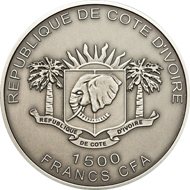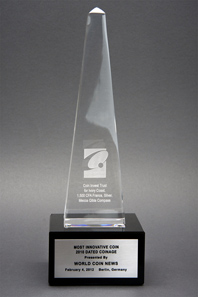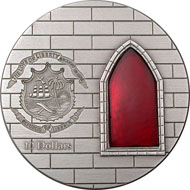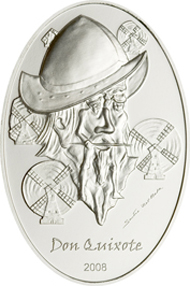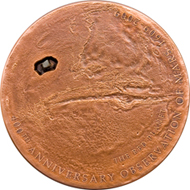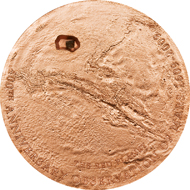May 10, 2012 – A coin is a coin is a coin. One could think that he knows what a coin is all about: obverse, reverse, each of them with images and inscriptions, the edge might be plain or reeded, maybe it can bear another inscription. But a coin can be designed quite differently, as the Coin Invest Trust (CIT) proves each time anew since the 1980s. The small company in subalpine Liechtenstein has just recently won recognition for its innovative approach to coin design.
Mecca Compass as coin.
On behalf of the West African nation Côte d’Ivoire, CIT developed a silver coin representing a traditional Mecca Compass. Actually, you can place a small magnetic “spoon” onto the coin, which shows reliably the direction to Mecca, the Holy city of Islam.
With the Mecca Compass the Coin Invest Trust gained the Coin of the Year Award in February 2012.
During the World Money Fair Berlin this idea won the prize of most innovative coin of the “Coin of the Year” award (COTY) sponsored by Krause.
This prize is only the last in a long sequence of distinctions gathered by the “spin doctors” from Balzers since many years. By now the organisers know that the company holds always some surprise. In 1990 CIT won the award of best silver coin (COTY 1990), but in 1993 it gained the prize of most innovative coin for the first time. And this should repeat many more times since then. The coin community could only gaze at the exuberant affluence of ideas that expanded the definition of coin. In 1996 a CIT coin was awarded most innovative coin again: a golf player holes his ball while the flagstick still marks the hole. But the hole is actually worked out, thus one looks right through the coin!
The first coin of the Tiffany series from 2004.
Ten years later, in 2006, another success story has begun, the Tiffany series. With this series alone the Liechtenstein company earned five renown awards. Real Tiffany glass is artfully inserted into the coins of this series representing window elements. That technique convinced the juries over and over again.
Do you realise the two pictures on the obverse?
Another time the Liechtenstein team gained the cooperation of Swiss artist Sandro del Prete realising a little work of art: in the centre you see the “Knight of the sad countenance” wearing his helmet. But at a closer look it is Don Quixote and Sancho Panza riding to new adventures under a big helmet. The Coin Constellation honoured this idea awarding to it the Special Prize from the organizing Committee in 2009. It was also the Coin Invest that introduced colour, holograms, and 3D-elements …
In retrospect, Michael Vogt, CEO of CIT, describes the introduction of colours: “That was revolutionary, even though the quality of the first specimens was terrible judging from today’s possibilities. But you have to consider that we introduced the technique that is operated today by all the big mints. The next thing were the special shapes and microscripts. These were technically very, very difficult to realise. Then followed the holograms, the true colour holograms, yes, it was also us who delivered them first.”
400 years of Mars observation rendered visible with a small element of Mars stone.
The Coin Constellation awarded the CIT with another prize in recognition of the unique idea of how the Mars coin was designed. On behalf of Cook Islands CIT searched for something special on rendering visible 400 years of Mars observation in a way attractive to collectors. They achieved this by inserting a piece of Mars into the coin! A small element of stone from the red planet made these coins really unique.
The future will show what else the creative brains in Liechtenstein will excogitate to illustrate how coins can be designed. Many countries like Mongolia and Cook Islands, Andorra and Palau are among the loyal partners of CIT. And dealers and collectors both appreciate CIT’s quality: New issues are not perpetuated, CIT thinks of the secondary market, too.
You will find many amazing products of the Coin Invest Trust on its website.




